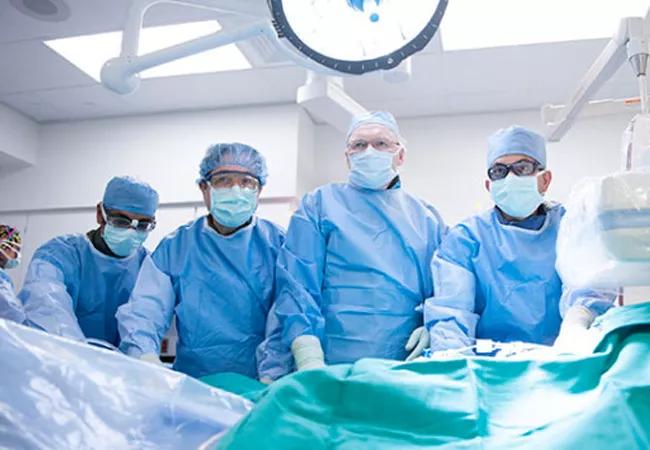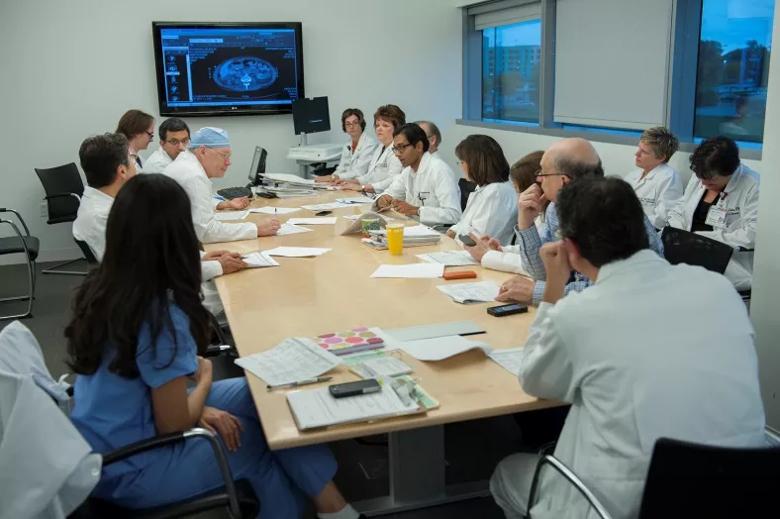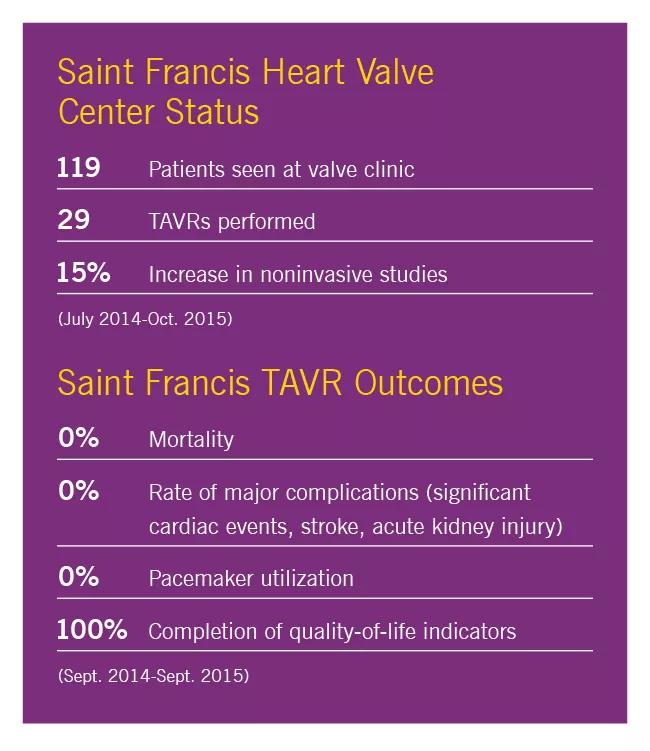How Cleveland Clinic helped a Missouri center launch its program

Cleveland Clinic’s Miller Family Heart & Vascular Institute has built a network of affiliated and allied provider organizations across the U.S. to share best practices and help these organizations enhance their cardiovascular programs from clinical, operational and strategic perspectives.
Cleveland Clinic is a non-profit academic medical center. Advertising on our site helps support our mission. We do not endorse non-Cleveland Clinic products or services. Policy
This post profiles how Cleveland Clinic helped one such affiliate organization design and launch a program for transcatheter aortic valve replacement (TAVR) that has since logged some impressive early outcomes.
Saint Francis Medical Center is a 289-bed nonprofit tertiary care institution in Cape Girardeau, Missouri, a city of nearly 40,000 residents in the state’s southeast corner. Not long after enlisting Cleveland Clinic to complete a programmatic evaluation of its cardiac services, Saint Francis entered into a cardiovascular surgery and cardiology affiliation agreement with Cleveland Clinic starting in early 2014.
Soon after the affiliation began, the Saint Francis team requested Cleveland Clinic’s assistance in bringing TAVR services to their community and providing second opinions on their patients with aortic valve disease who might benefit from TAVR.

Figure 1. A meeting of the Cleveland Clinic clinical team as they prepared guidance for Saint Francis Medical Center on how to design and launch a TAVR program.
To address these requests, Cleveland Clinic’s clinical team that manages affiliate relationships (Figure 1) worked with industry vendors to prepare the Saint Francis facility to perform TAVR procedures. An ancillary benefit of this effort was a resultant strengthening of the alignment within Saint Francis to create a more collaborative relationship among hospital administrators, cardiologists, cardiac surgeons and nursing leaders. That collaboration has been continually enhanced since the first TAVR device was implanted at Saint Francis on Sept. 30, 2014.
Initiating a TAVR program is complex, encompassing delivery of care and services from multiple providers to a fragile patient population. Providing the needed guidance to Saint Francis required that multiple administrative and clinical advisors from Cleveland Clinic offer advice on, and real-time exposure to, how TAVR care is delivered at Cleveland Clinic. The following recommendations were made to streamline the planning and implementation stages of TAVR program development and complement support from TAVR device vendors.
Identify key stakeholders who will contribute to TAVR care; begin routine meetings. Initial meetings at Saint Francis included members of Cleveland Clinic’s clinical team managing affiliate relationships, and discussions reviewed the resources available from Cleveland Clinic and outlined a realistic timeline of planning before program implementation.
Begin a multidisciplinary rotation of visits to Cleveland Clinic. The Saint Francis TAVR team visited multiple times over several months to meet with their Cleveland Clinic counterparts and observe routine TAVR functions. They witnessed scheduled cases and high-risk AVR team meetings over three days. The first visits included physician champions from cardiac surgery and interventional cardiology. Later visits included the valve clinic coordinator, anesthesiologists, the cardiac surgery nurse manager and cardiac surgery nurses, a noninvasive imaging technologist, and the cath lab nurse manager and cath lab nurses and technologists. Cleveland Clinic participants included:
Each meeting concluded with a summary of the observation experience and included an opportunity to discuss how to implement like practices at Saint Francis.
Capitalize on TAVR visits for additional exposure to support other service priorities. Additional meetings were encouraged in an effort to discuss other projects and areas of focus identified in the initial programmatic assessment to improve operations and quality in Saint Francis’ cardiac services.
In addition to site visits, clinical questions from Saint Francis staff were addressed on an individual basis by Cleveland Clinic’s affiliate team regarding policies and standards of care. Cleveland Clinic’s clinical team also provided a final slide deck outlining key points to remember during the TAVR procedure, including strategies for preventing and managing common complications and an outline of roles and responsibilities of the team members providing intraoperative care. The list was tailored to the existing structure at Saint Francis.
In its first 16 months of offering TAVR, Saint Francis successfully completed 29 TAVR procedures, with no major adverse events or deaths (see box below). Moreover, collaboration among hospital administrators, physicians and nursing leaders at the facility has demonstrably improved. Saint Francis staff continue to work with the Cleveland Clinic affiliate team on new projects to enhance the services that Saint Francis provides and to engage in discussions regarding patient care and second opinions. They are looking to identify additional advanced procedures to offer to patients following a similar consultative preparation with Cleveland Clinic.

“Cleveland Clinic’s clinical and administrative expertise smoothed the way for successful rollout and maintenance of our TAVR program,” says Edward Bender, MD, Chief of Cardiothoracic Surgery at Saint Francis. “This model of cooperative engagement is being applied to other categories of heart care to enhance patient outcomes and clinical efficiency.”
For more on advisory services from Cleveland Clinic’s Miller Family Heart & Vascular Institute, see affiliatenetwork.clevelandclinic.org.

Further acute testing not needed if ECG and high-sensitivity troponin are negative

Scott Cameron, MD, PhD, also brings wide-ranging research interests to bear

Pioneering U.K. vascular surgeon joins Cleveland Clinic

AHA statement is first comprehensive document on perioperative stroke reduction

Recognition reflects prioritization of long-term patient outcomes

Recommendations help distinguish exercise-induced remodeling from pathology

JACC review highlights factors unique to women, ways to tailor management

Pushing the envelope in ablation of atrial fibrillation, ventricular tachycardia